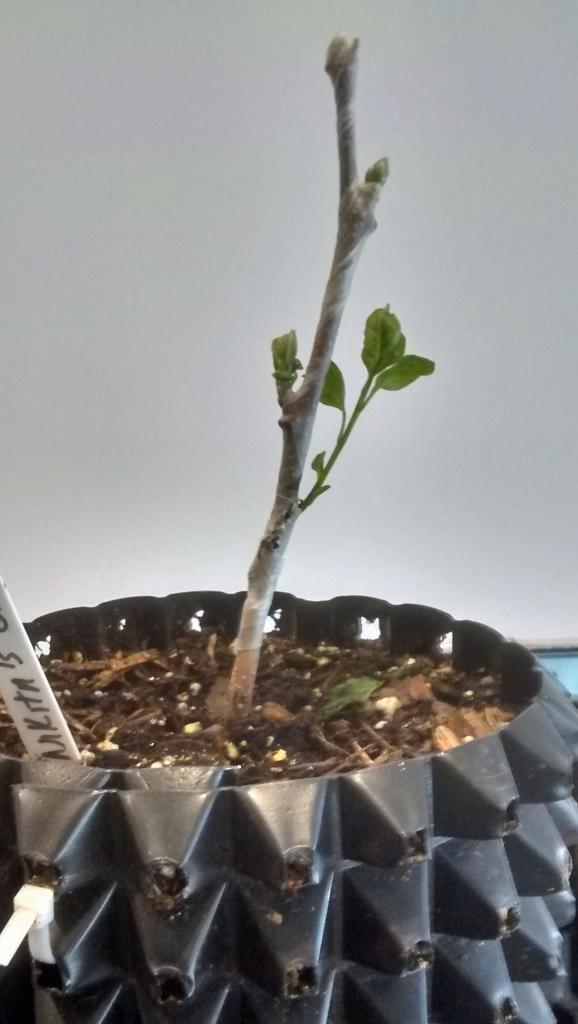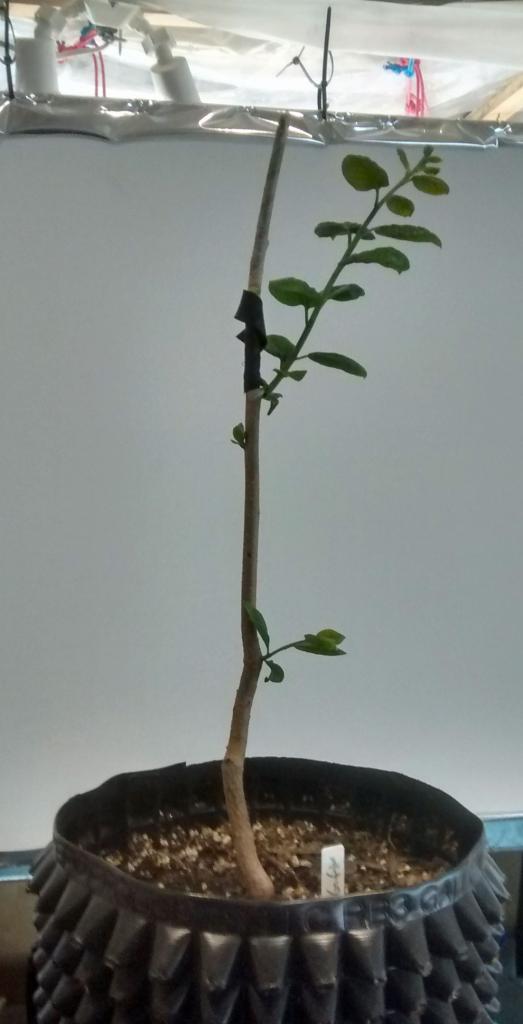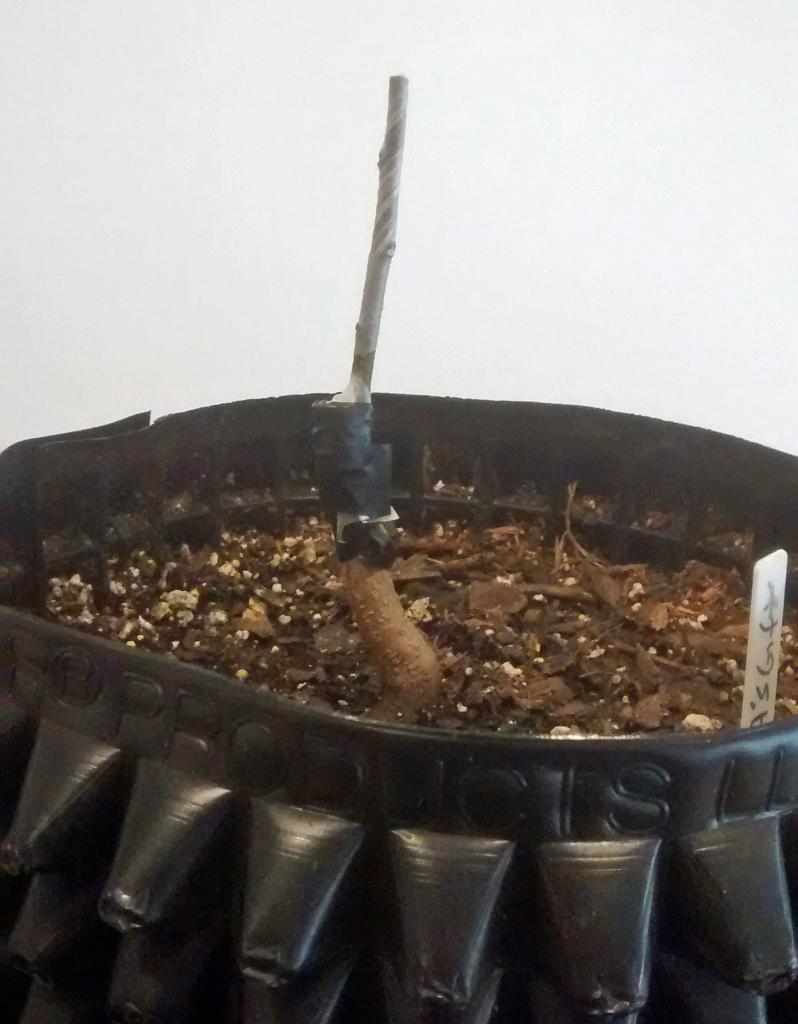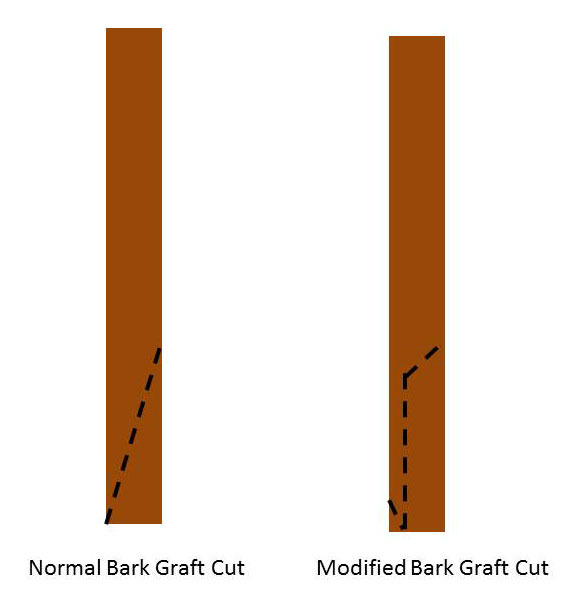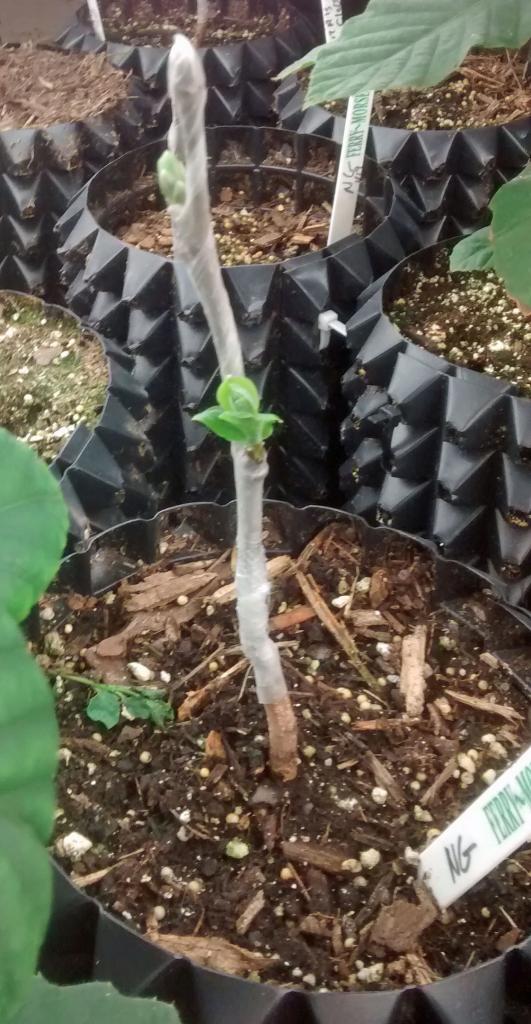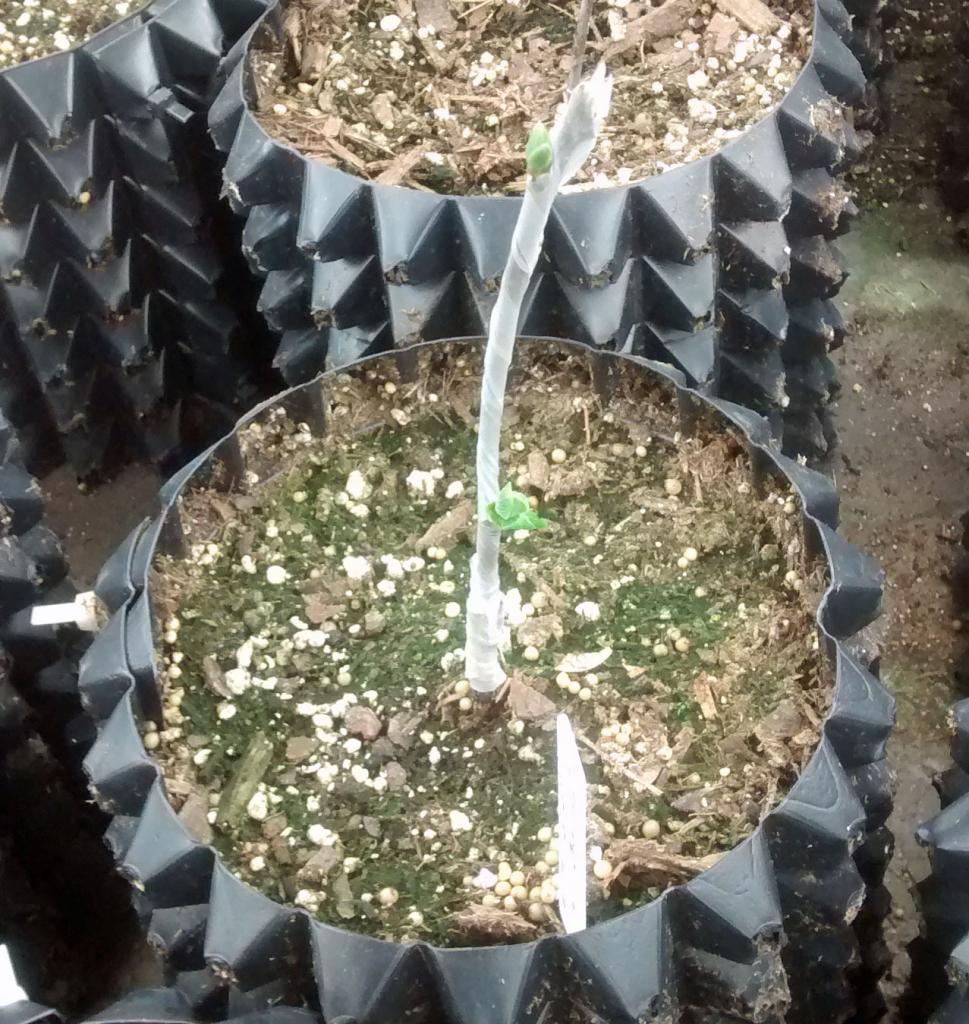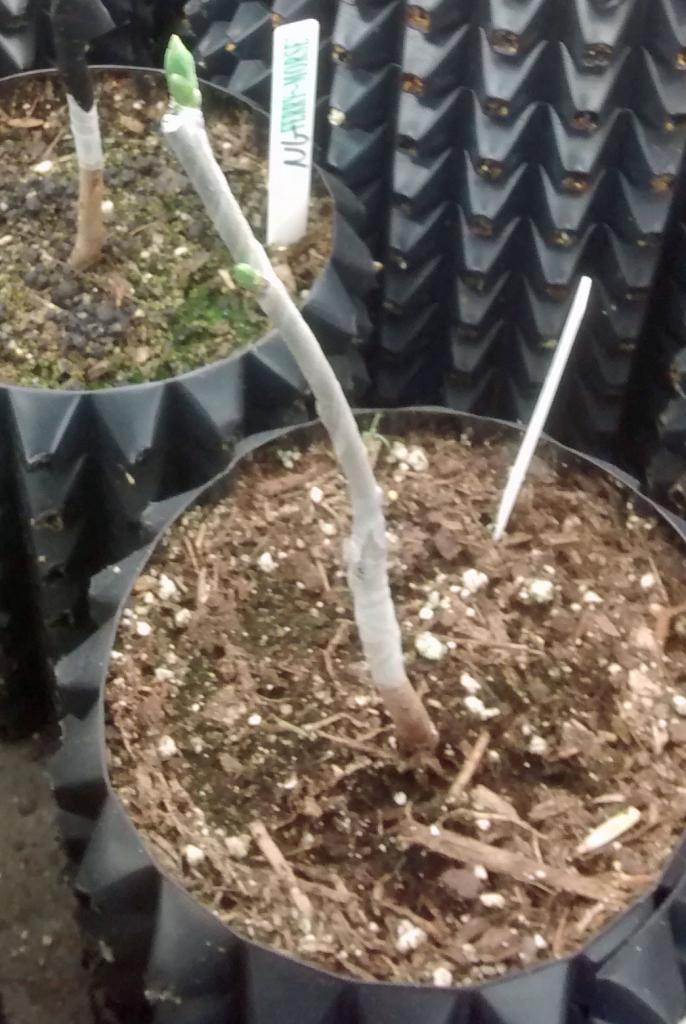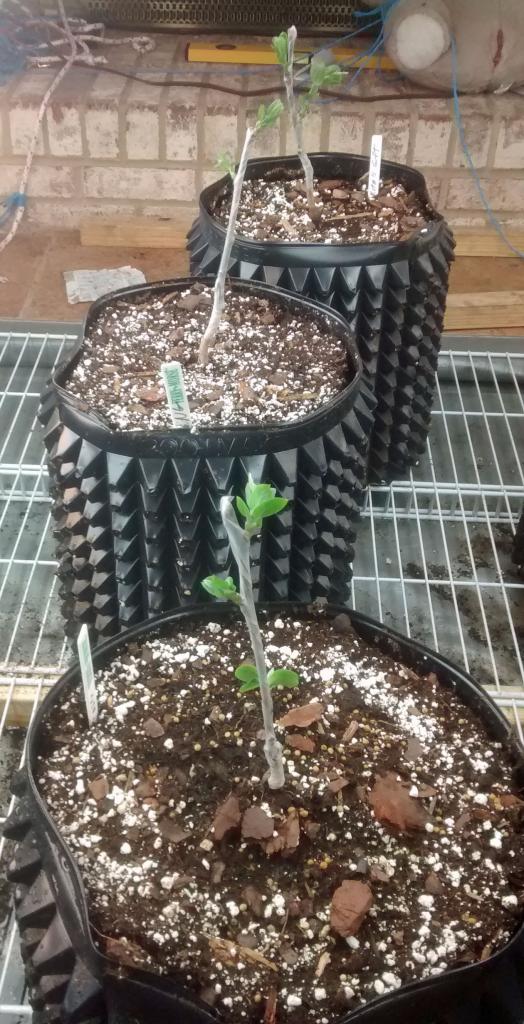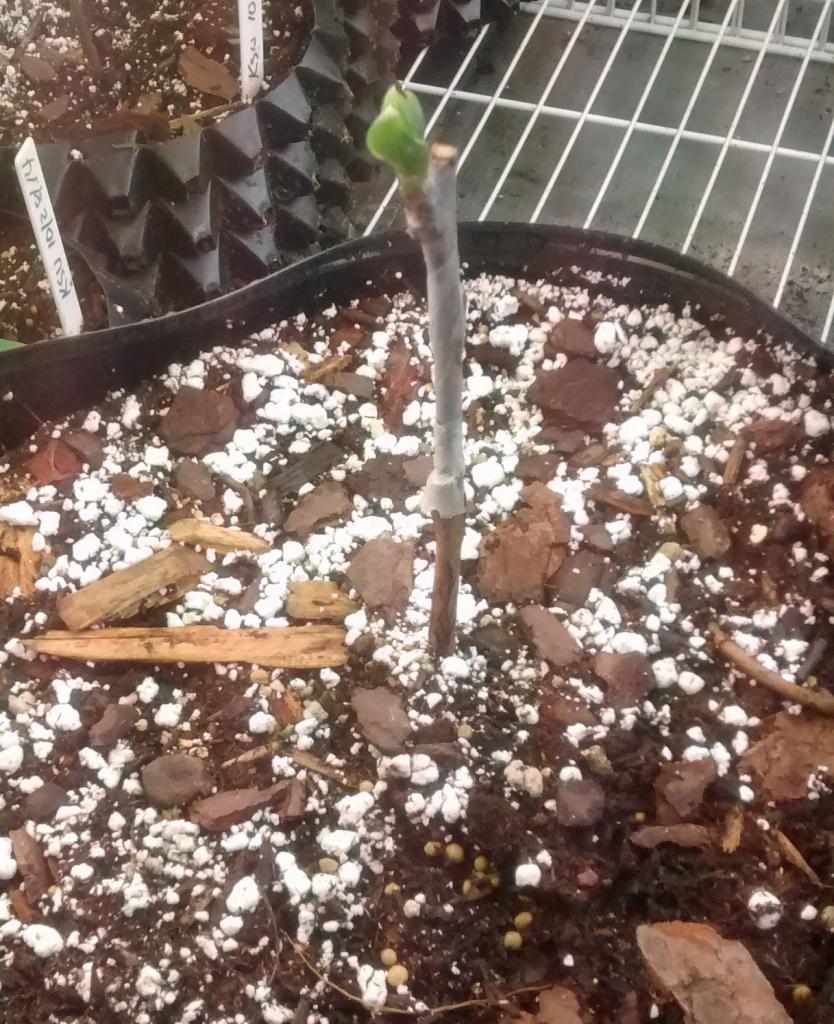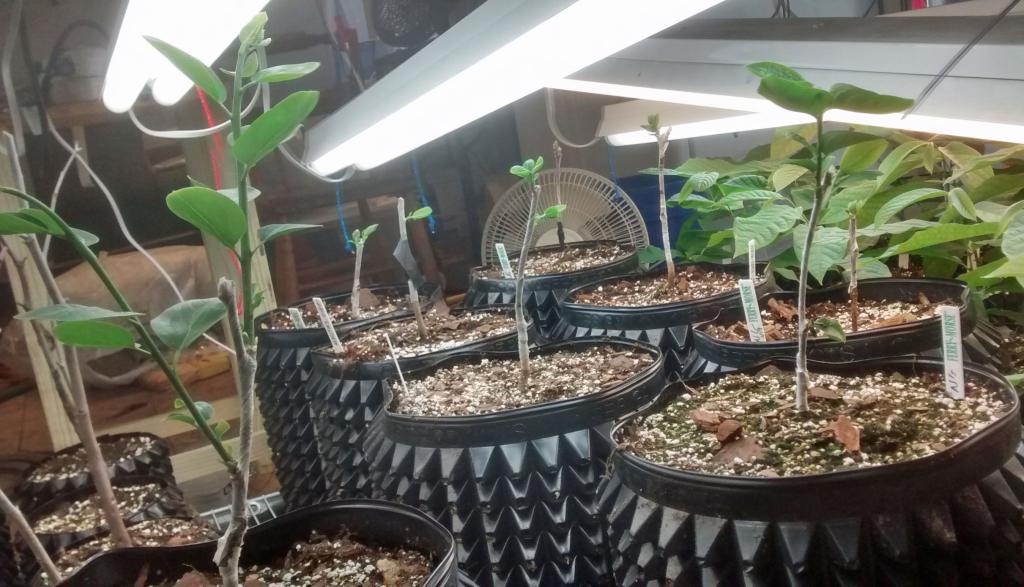yoderjac
5 year old buck +
My jujube package finally arrived from Roger Meyer. I got both scions and sprouts for rootstock.
I whip & tongue grafted my 3 Tigertooth that I grew from root cuttings. They were fully leafed. out. They grafting "seemed" to go well, but only time will tell. The three varieties I grafted to the tigertooth were Admiral Wilkes, Globe, and Shanxi Li.
Although I got wild sprouts for rootstock, I don't plan to use them in the field because they tend to thicket through root propagation producing poor quality trees. Instead, I plan to use them for an experiment. I plan to graft the other varieties to them and grow them in 1 gal rootbuilder II containers. Once the grafts are well established, I'll transplant them to 3 gal containers, but I will plant them deep. I plan to place some water permeable landscaping cloth right below the graft. I'll then score the tree above the graft, apply rooting hormone, and fill the container with mix.
My hope is that the native root system will keep the tree alive. Because of the landscaping cloth, I would expect there to be less nutrition and water below the cloth than above. I hope this encourages rooting from above the graft. After a growing season, if I have above graft rooting, I clip off the original roots and have a variety growing on its own roots.
I considered grafting them tonight and then planting them in the 1 gal roobuilder IIs. Given my poor results with the persimmons, I decided to wait. Jujube scions keep very well, so I put them all in the fridge and planted the rootstock sprouts. I'm going to let them leaf out before grafting them.
I'll report back as this experiment continues...
I whip & tongue grafted my 3 Tigertooth that I grew from root cuttings. They were fully leafed. out. They grafting "seemed" to go well, but only time will tell. The three varieties I grafted to the tigertooth were Admiral Wilkes, Globe, and Shanxi Li.
Although I got wild sprouts for rootstock, I don't plan to use them in the field because they tend to thicket through root propagation producing poor quality trees. Instead, I plan to use them for an experiment. I plan to graft the other varieties to them and grow them in 1 gal rootbuilder II containers. Once the grafts are well established, I'll transplant them to 3 gal containers, but I will plant them deep. I plan to place some water permeable landscaping cloth right below the graft. I'll then score the tree above the graft, apply rooting hormone, and fill the container with mix.
My hope is that the native root system will keep the tree alive. Because of the landscaping cloth, I would expect there to be less nutrition and water below the cloth than above. I hope this encourages rooting from above the graft. After a growing season, if I have above graft rooting, I clip off the original roots and have a variety growing on its own roots.
I considered grafting them tonight and then planting them in the 1 gal roobuilder IIs. Given my poor results with the persimmons, I decided to wait. Jujube scions keep very well, so I put them all in the fridge and planted the rootstock sprouts. I'm going to let them leaf out before grafting them.
I'll report back as this experiment continues...

